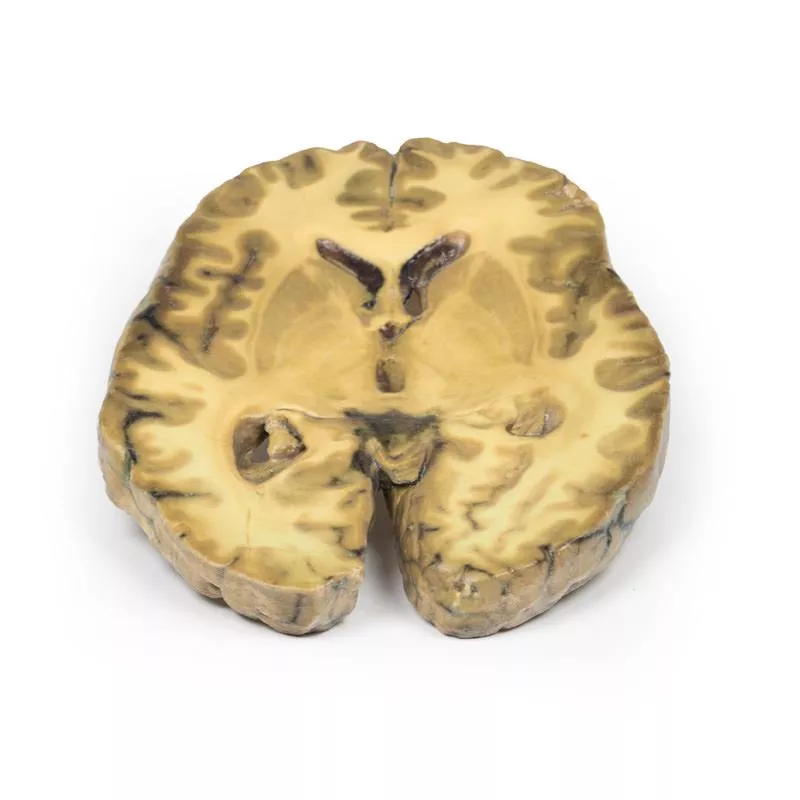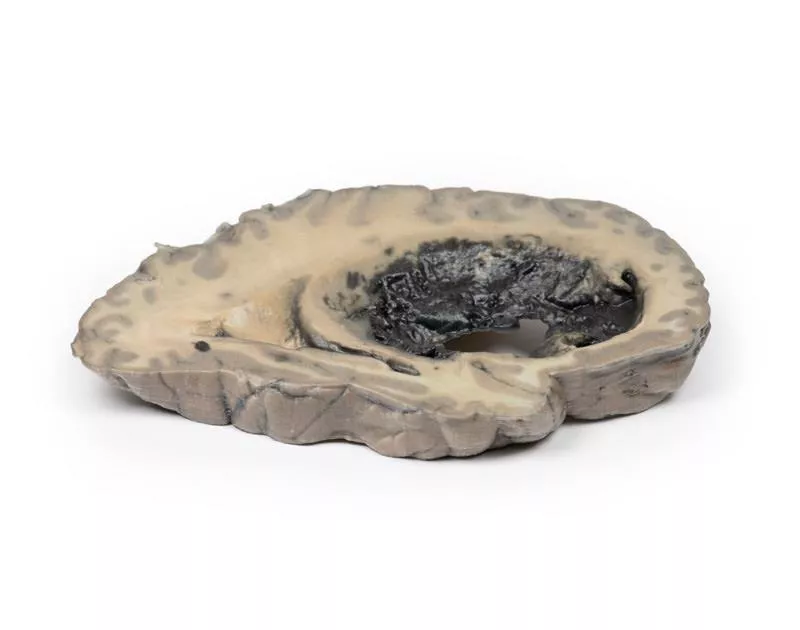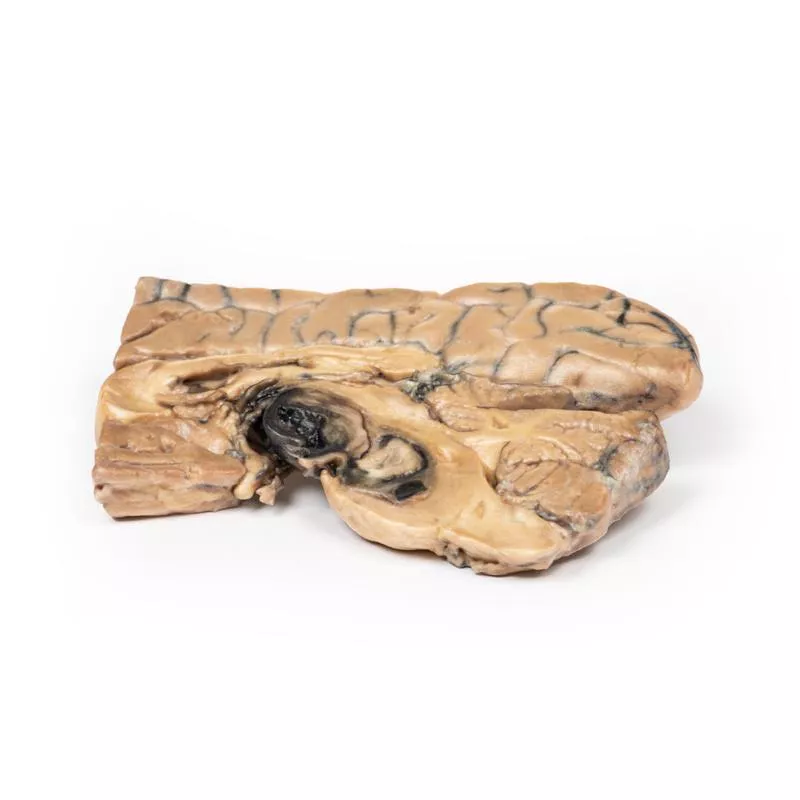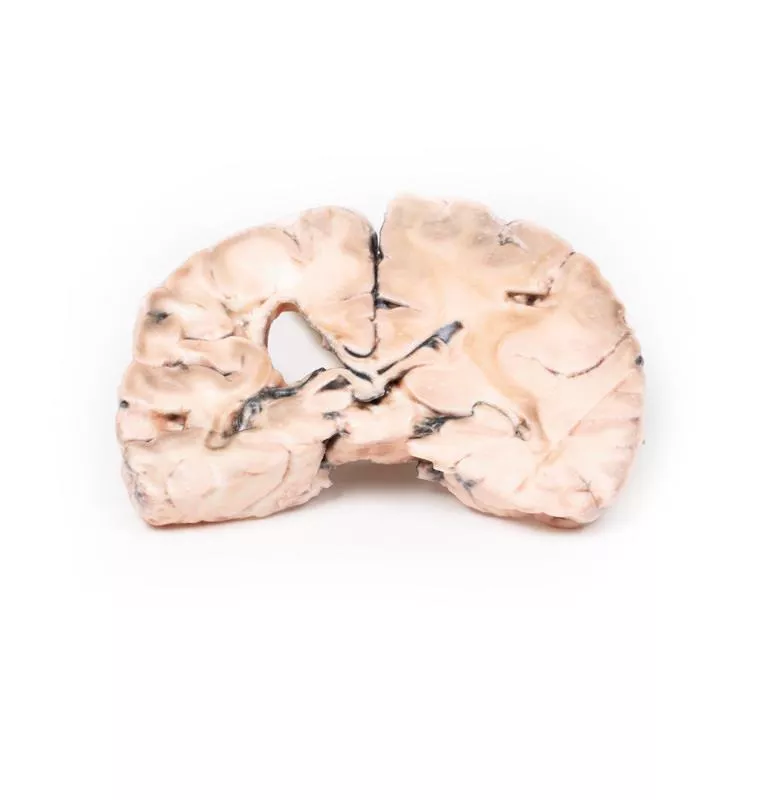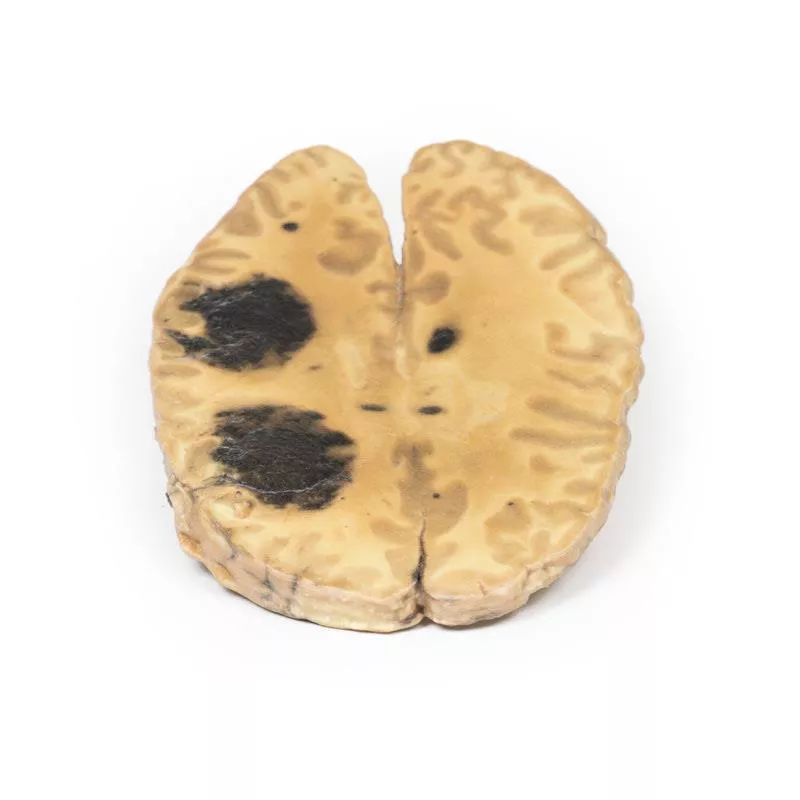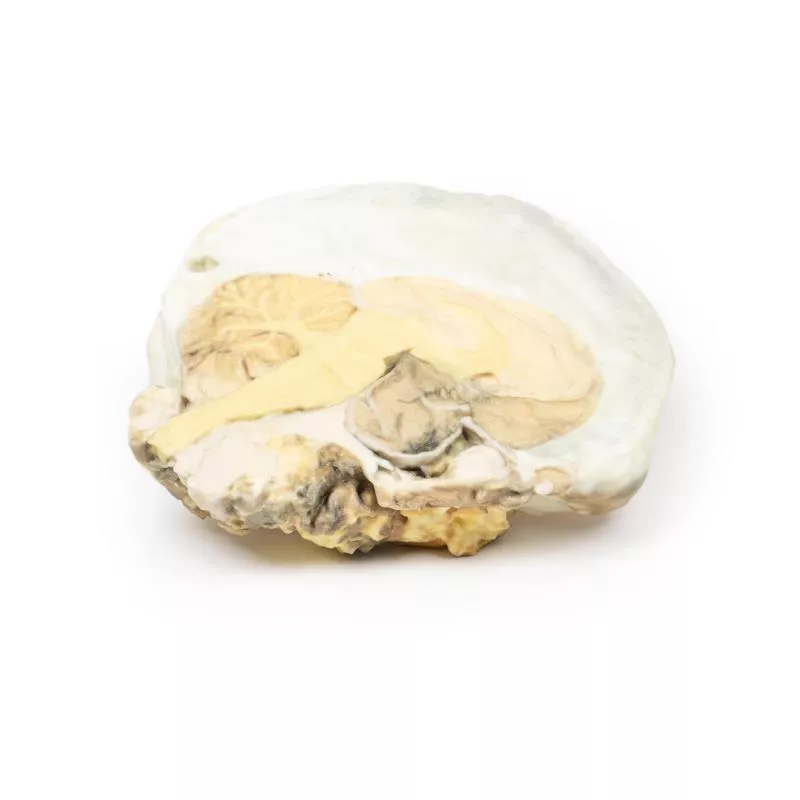Product information "Meningioma"
Clinical History
A 68-year-old woman presented with new-onset seizures and was diagnosed with epilepsy. A collateral history revealed a gradual personality change. Several months later, she died from a myocardial infarction.
Pathology
The tumour is located between the two frontal lobes, compressing them. It has a pinkish cut surface with yellow areas indicating necrosis and is attached anteriorly to the dura mater. This represents a typical meningioma.
Further Information
Meningiomas are among the most common tumours associated with the central nervous system, though they originate from the arachnoid cells of the meninges (not the CNS itself). They are often attached to the dura or its folds (e.g. falx cerebri, tentorium cerebelli) and are typically slow-growing and benign.
Symptoms depend on tumour size and location and may include seizures, personality changes, sensory disturbances, or signs of increased intracranial pressure. Many meningiomas remain asymptomatic.
Treatment ranges from depending on clinical presentation and tumour type.
Meningiomas are rare in children. The median age at diagnosis is 65, and they are more common in women (3:2). Ionising radiation, especially cranial radiotherapy, increases the risk. The strongest genetic predisposition is seen in neurofibromatosis type 2 (NF2), a dominant disorder caused by NF2 gene mutations on chromosome 22, often resulting in multiple nervous system tumours.
A 68-year-old woman presented with new-onset seizures and was diagnosed with epilepsy. A collateral history revealed a gradual personality change. Several months later, she died from a myocardial infarction.
Pathology
The tumour is located between the two frontal lobes, compressing them. It has a pinkish cut surface with yellow areas indicating necrosis and is attached anteriorly to the dura mater. This represents a typical meningioma.
Further Information
Meningiomas are among the most common tumours associated with the central nervous system, though they originate from the arachnoid cells of the meninges (not the CNS itself). They are often attached to the dura or its folds (e.g. falx cerebri, tentorium cerebelli) and are typically slow-growing and benign.
Symptoms depend on tumour size and location and may include seizures, personality changes, sensory disturbances, or signs of increased intracranial pressure. Many meningiomas remain asymptomatic.
Treatment ranges from depending on clinical presentation and tumour type.
Meningiomas are rare in children. The median age at diagnosis is 65, and they are more common in women (3:2). Ionising radiation, especially cranial radiotherapy, increases the risk. The strongest genetic predisposition is seen in neurofibromatosis type 2 (NF2), a dominant disorder caused by NF2 gene mutations on chromosome 22, often resulting in multiple nervous system tumours.
Erler-Zimmer
Erler-Zimmer GmbH & Co.KG
Hauptstrasse 27
77886 Lauf
Germany
info@erler-zimmer.de
Achtung! Medizinisches Ausbildungsmaterial, kein Spielzeug. Nicht geeignet für Personen unter 14 Jahren.
Attention! Medical training material, not a toy. Not suitable for persons under 14 years of age.

























